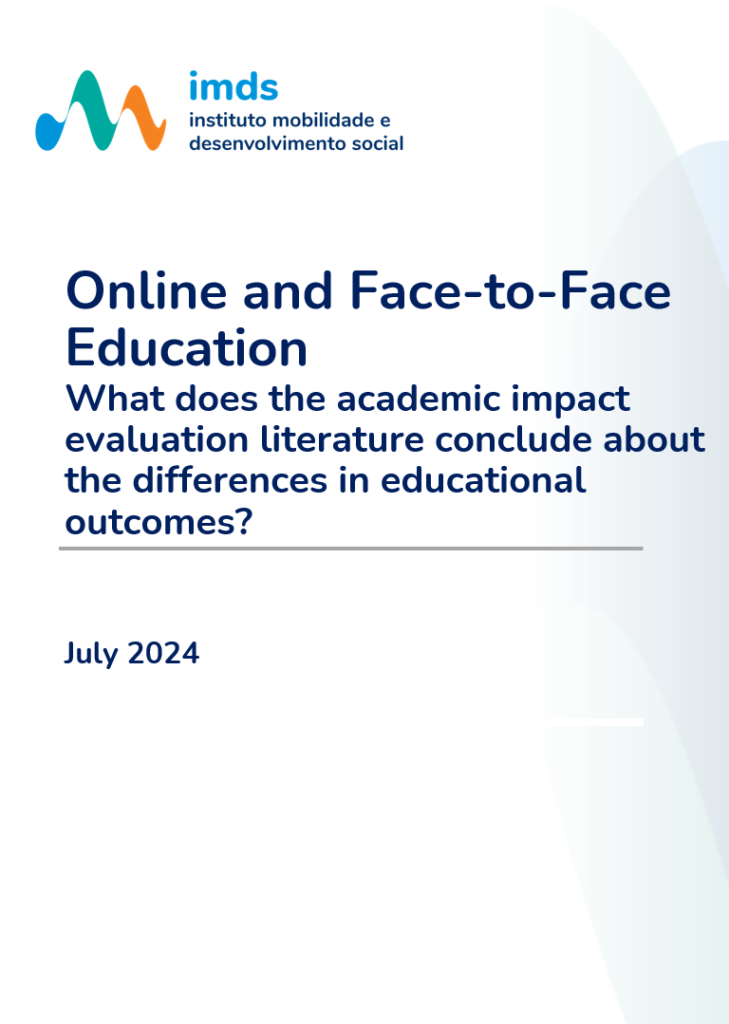Latest
Publications
Online and Face-to-Face Education: What does the academic impact evaluation literature conclude about the differences in educational outcomes?
Author: Michel Szklo
Edition: 1st
Published in: July 2024
This publication reviews the academic literature on the differences in educational outcomes between online and face-to-face learning. While online learning can increase access to education, it often results in lower academic achievement and higher dropout, especially among students with lower previous performance, and can deepen inequalities.
In contrast, blended learning, which combines online and face-to-face components, maintains the quality of learning and is a more effective approach, without compromising the quality of education. The flipped classroom, a variation of blended learning, also improves student performance, especially when it includes cooperative activities.
The evidence highlights the need to balance access and quality in the implementation of online education modalities, considering alternatives that involve face-to-face components and active and cooperative learning methodologies. These conclusions are relevant to the recent national debate and the policies of the Ministry of Education on the regulation of distance learning.
Enjoy your reading!